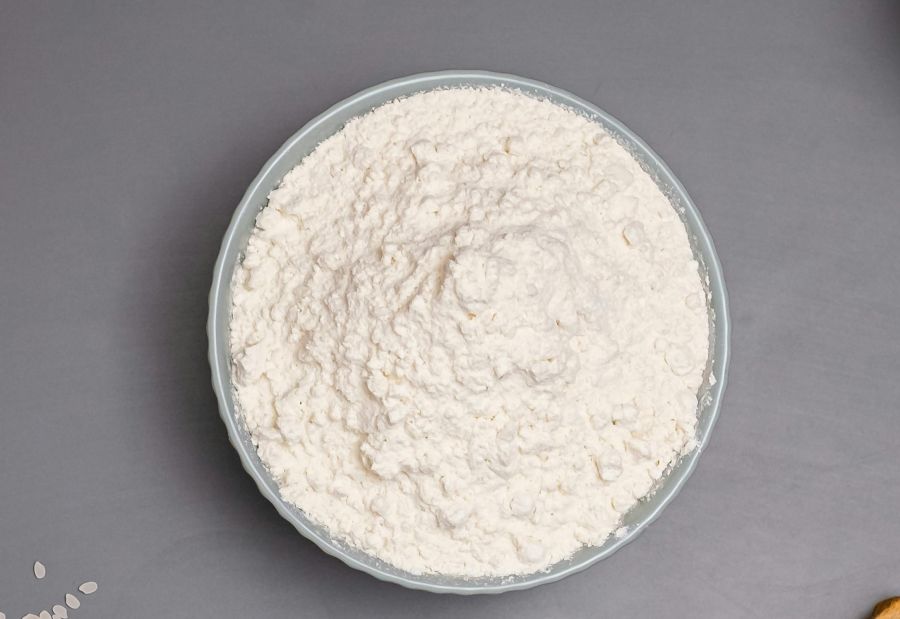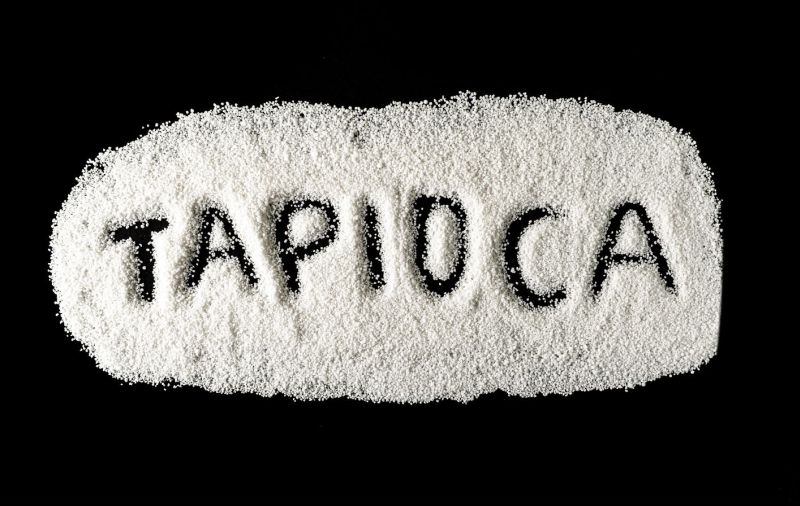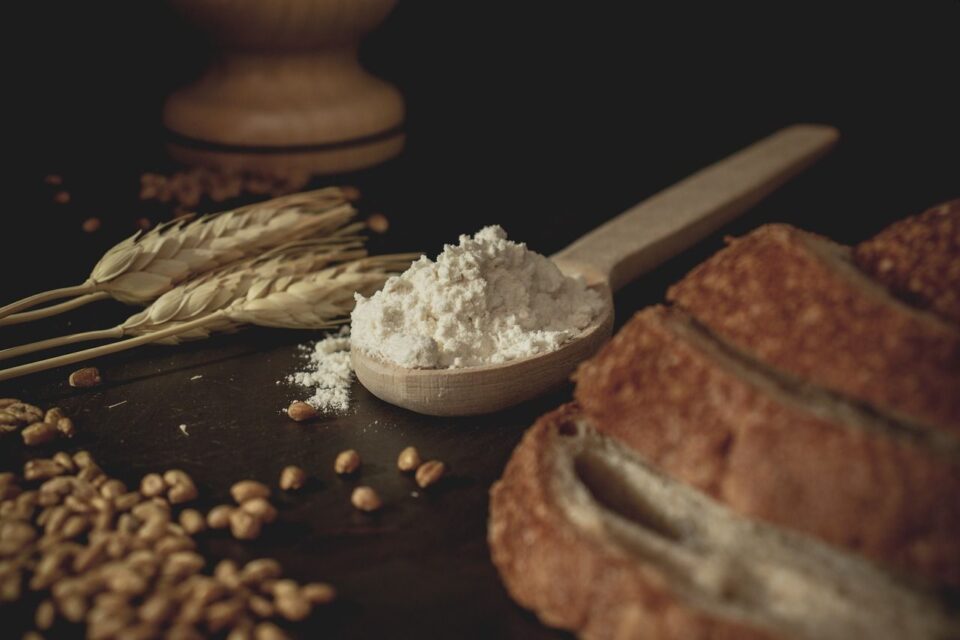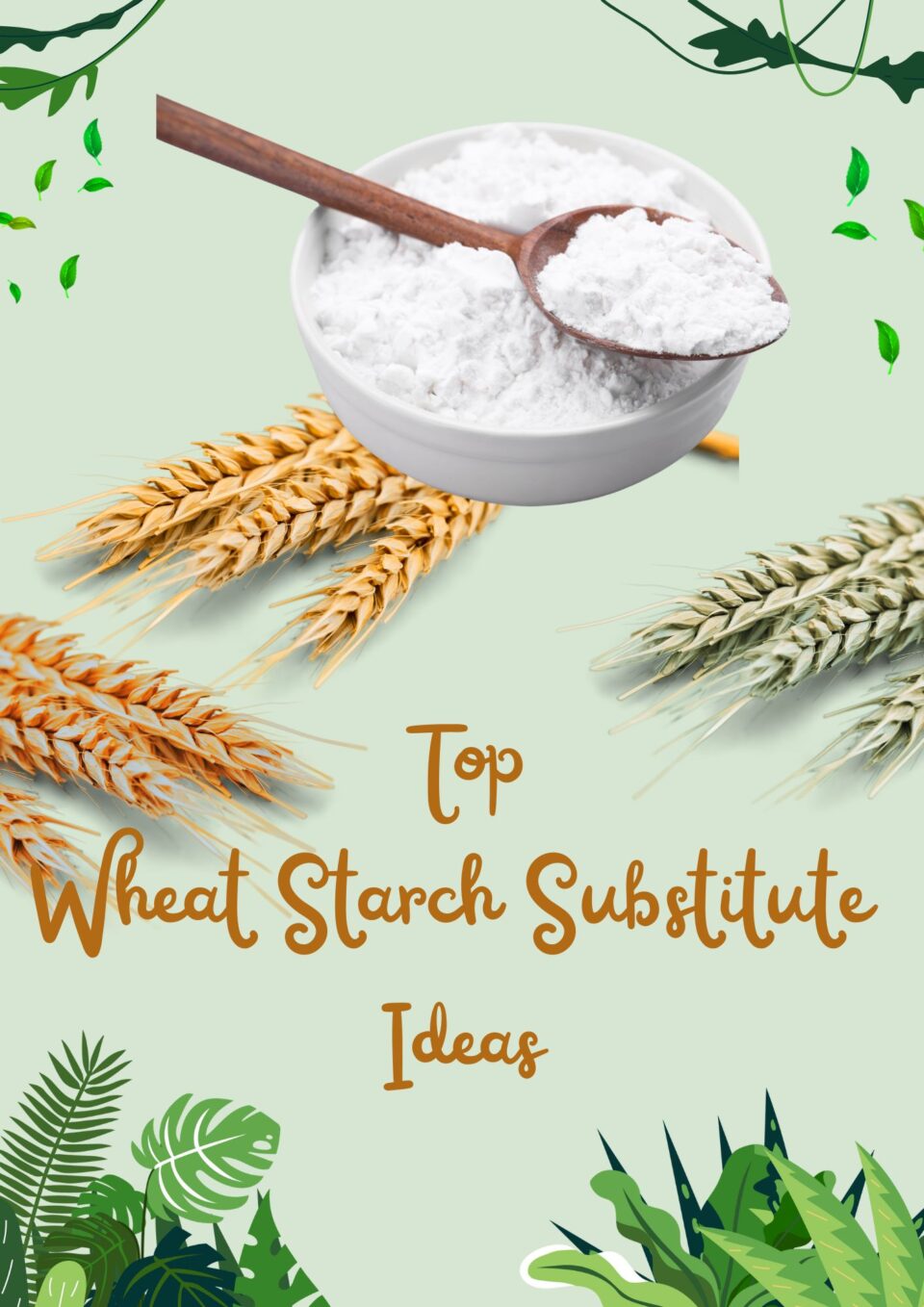The rarity of this starch may sometimes have you looking for a wheat starch substitute. Because although wheat flour and grain are aplenty, wheat starch is rarely stocked on store shelves and is perhaps even more of a rarity in recipe books.
Yet, it does have its uses and may be called upon in some recipes. Besides, the popularity of this starch is increasing, so it is possible that it might be called upon more often in recipes and make its way to store shelves.
But until that happens, it’s still a good idea to consider alternatives. Popular wheat starch substitutes include corn starch, tapioca starch, rice starch, potato starch, xanthan gum, and arrowroot flour. Though these are the popular ones, some other starches may also be used, depending on the cook’s preferences.
Let’s get into the details of substitution and make it work its magic!
Table of Contents
Top Substitutes For Wheat Starch
1. Cornstarch
Cornflour (or cornstarch) is one of the more popular and easily available starches around the world. It has a neutral taste, works rather well as a thickening agent, is easily available, and is priced to be affordable.
It is also amongst the best substitutes for wheat starch.
Wheat starch and cornstarch are rather similar in their culinary behavior, including thickening, flavors, and more. Cornstarch is also naturally gluten-free and is often the primary choice for culinary uses.
It can be used to thicken gravies, soups, and more. It also works rather well for frying uses as well.
One part where wheat starch outdoes cornstarch is how well it handles reheating. Cornstarch can thin out when reheated in any significant way. However, wheat starch can handle multiple reheating cycles and high temperatures, making it more useful for soups or gravies that might need to be reheated multiple times.
That said, for general use, cornstarch can be a lovely wheat starch substitute. Plus, unless you do need multiple reheating cycles at high temperatures, cornstarch can work just as well as wheat starch.
Substituting cornstarch for wheat starch can be done in equal measures (1:1 ratio), though you might make adjustments as needed.
2. Rice Starch

Derived from white rice, rice starch is a useful gluten-free choice for cooking needs. It can be a decent alternative for wheat starch as well.
It’s worth noting that rice starch, much like wheat starch, is different from rice flour. Also, much like wheat starch, it can be a somewhat rare find on store shelves.
Rice starch is a capable starch that can handle thickening for sauces and gravies, plus it can handle cooking at high temperatures and reheating.
The downside is that some rice starch can add a bit of a whitish tinge to some food, which can limit its application.
Yet, where suitable, rice starch can replace wheat starch in an equal 1:1 ratio.
3. Potato Starch
Here’s a very capable starch that can work wonders as a substitute for wheat starch in many recipes. Potato starch is naturally gluten-free, has a neutral taste, and works remarkably well as a thickening agent. It is, however, quite rich in carbohydrates and calories, notably so in comparison to wheat starch.
While using a starch generally adds some empty calories to a recipe, using potato starch significantly ups those calories. Just something to keep in mind when using potato starch for your food.
The troubling part when buying potato starch is generally the lack of standard nomenclature. Conventional potato starch is obviously labeled as potato starch, but it could also be labeled as potato flour (labeling starches as flours is unfortunately quite common).
As things stand, potato flour is also a product that is made from cooked, dried, and finely ground potatoes. We talked about this confusing nomenclature in detail when discussing potato flour substitutes – you can read it for more details.
Point is, when buying potato starch, especially for use as a substitute for wheat starch (or other starches), check the labels carefully to ensure that you’re buying potato starch, and not potato flour (which is dehydrated potatoes).
Adding water to dehydrated potatoes can put you on a path to making very fine mashed potatoes, much like potato flakes!
While potato flour too can work as a thickening agent for gravies, it also brings the flavors of potatoes and can have a different water absorption ratio.
So, it’s best to check labels to ensure you’re buying potato starch, even if it’s labeled as potato flour. But buying actual potato flour can impact the recipe to some extent.
4. Tapioca Starch

Tapioca starch, also called tapioca flour, is a useful substitute for wheat starch. Though this starch is derived from the root of the cassava plant, it undergoes significant processing before it’s labeled as tapioca starch.
The starch has several applications in cooking and its unique qualities make it quite a desirable element in several recipes, like the famous bubble tea.
This starch can be available in several forms, including pearls, sticks, flakes, and flour. The flour form of the starch is preferable when substituting for wheat starch, or for using this starch as a thickening agent for sauces or gravies.
It’s worth noting that tapioca doesn’t work well at higher temperatures for cooking, but it can start thickening at a lower temperature than cornstarch or wheat starch. Additionally, this starch forms a glossy gel-like layer, which might be more desirable in several recipes, including puddings, when compared to other options like wheat starch.
5. Xanthan Gum
Xanthan gum is a rather strong starch with excellent binding and thickening properties. Derived from plants, this starch can often go towards a somewhat gel-like consistency, thus working well not just as a thickener, but also for emulsifying uses.
While it has been used in commercial products for a rather long time, its use for the regular customer has been somewhat limited until recent years. Yet, its popularity is well-deserved. It can work with water-based liquids at any temperature (hot or cold), can handle multiple freeze-thaw and reheating cycles, and can resist degradation.
However, it is somewhat expensive as compared to other, conventionally available starches like cornstarch or even potato starch. Additionally, it is not recommended to use Xanthan gum regularly for a prolonged time as that may cause some digestive issues.
Overall, Xanthan Gum is an excellent and in many ways, a superior alternative for wheat starch in most uses. Even so, it’s better to consider xanthan gum a specialty ingredient that’s employed in specific cases, rather than something for regular use.
When using xanthan gum as a wheat starch substitute, start with about half the recommended quantity of wheat starch, then add more xanthan gum if necessary. In many cases, a 1:1 ratio for substitution works fine, but it is generally better to start with a smaller quantity to have better control over texture and thickness.
6. Other Useful Substitutes For Wheat Starch
Several other starches and similar ingredients can also work as suitable alternatives for wheat starch. Let’s have a quick overview of the available options, so we can be fairly comprehensive without being unnecessarily lengthy in this approach.
- Arrowroot Flour: Also known as arrowroot powder or arrowroot starch, this is technically a starchy flour. Yet, its functions usually fall within the realm of starches. It works quite well as a thickening agent and can do most things that cornstarch or wheat starch can.
Additionally, arrowroot flour has a notable fiber content, which makes it a suitable choice for many people, since it offers more than just the empty calories of conventional starch. When substituting arrowroot flour for wheat starch, you can proceed with an equal 1:1 ratio. - Guar Gum: Much like Xanthan Gum, this plant-derived starch is an excellent thickener. Additionally, it’s rich in fiber and less expensive, but also less versatile than Xanthan gum. It is, however, usually seen as a specialty ingredient and used only when necessary, rather than as a generic replacement for most starches.
- Psyllium Husk Powder: This is a possible, though not ideal substitute for wheat starch. Psyllium husk works decently well as a thickener for gravies and sauces. However, it isn’t exactly a starch and lives more in the domain of soluble fiber.
While its rich fiber content is a good quality it also limits its use. This husk is often marketed as a laxative and thus might not be a desirable pick for those with a sensitive stomach. And TBH, it’s better to use a starch as an alternative to wheat starch, rather than getting into such a cumbersome substitution.
A big reason I’ve included this is to actually discourage its use as a substitute for wheat starch. And that’s mostly because I see it recommended so often, it seemed worthwhile to make a point and suggest against its use as a substitute.
Understanding Wheat Starch And Its Properties
A Quick Note On Wheat Starch And Wheat Flour
Wheat starch, as we can guess, comes from wheat. A wheat kernel (without the husk) has three major parts. These are the bran, the endosperm, and the germ.
When producing conventional wheat flour, the wheat bran and germ are both removed. This leaves only the endosperm, milling which produces the white wheat flour we know so well.
However, it’s also possible to put the wheat endosperm through another process where the carbohydrates are extracted. The result is a fine flour, which is essentially wheat starch. Since this starch no longer has any proteins (including gluten), it cannot be worked as a dough and thus is qualitatively different from wheat flour.
On that note, even though wheat starch doesn’t contain gluten, it shouldn’t be considered gluten-free. Some impurities, including gluten, may remain in the starch. Yet, depending on how the starch is processed, it may be handled well-enough to remove enough gluten to be considered gluten-free.
So, it’s best to check allergen information before you decide on wheat starch being a gluten-free option. Although, it’s still best to remain somewhat skeptical.

Can Wheat Starch Be Considered To Be Gluten-Free?
According to the FDA, wheat starch is an ingredient that has been processed to remove gluten. The agency also acknowledges that the different processes to produce wheat starch can result in different amounts of gluten in the resulting wheat starch.
Yet, products that contain wheat starch can be labeled gluten-free, provided that the food product has less than 20 ppm (parts per million) of gluten.
This means it is possible for products to contain wheat starch and be gluten-free. Similarly, wheat starch produced in a way to have less than 20 ppm of gluten can also be considered gluten-free.
Overall, wheat starch can be gluten-free. However, not all wheat starch is necessarily gluten-free. So, check allergen information on the packaging before you buy.
What Does Wheat Starch Taste Like?
Let’s get the first thing out of the way – wheat starch does not taste like wheat grain or wheat flour, nor is it supposed to taste the same way. While wheat is known for its nutty, earthy, and slightly sweet flavor, wheat starch is more on the neutral side with a very mild cereal-like taste in its raw form.
When used in recipes, wheat starch is generally considered to be neutral in flavor.
This is a very useful quality and actually makes wheat starch suitable for use, as a… well, starch!
The Wheat Starch Substitute To Pick For Your Needs
As we see, there are several useful and easily available ingredients that can work as substitutes for wheat starch. The easiest and most convenient choice is corn starch, because it works remarkably well as a substitute and is easily available in most parts of the world.
However, for those who would like to see more options, our suggestions and ideas here include several other ingredients that can replace wheat starch in a recipe. So, take a look at these options and pick an ingredient that works best for you!

